Contents
- Literary & Performing Arts
- Lavani
- Theatre
- Poonah Painting
- The Sant-Poets of Pune
- Sant Dnyaneshwar
- Sant Tukaram
- Handicrafts
- Copperware and Brassware from Tambat Ali
- Creative Spaces of the District
- Bal Gandharva Ranga Mandir
- Yashwantrao Chavan Natyagruha
- Bharat Ratna Pandit Bhimsen Joshi Kaladalan
- Pune Bharat Gayan Samaj
- Lokshahir Annabhau Sathe Smarak
- Gyaan Adab
- Monalisa Kalagram
- Cultural Programs
- Pune International Literary Festival (PILF)
- Sawai Gandharva Bhimsen Mahotsav
- Pune Art Festival (PAF)
- Pune International Film Festival (PIFF)
- Lavani Mahotsav
- Artists
- Purushottam Laxman Deshpande
- Pandit Bhimsen Joshi
- Shanta Shelke
- Namdeo Dhasal
- Malati Bedekar
- Sources
PUNE
Artforms
Last updated on 5 November 2025. Help us improve the information on this page by clicking on suggest edits or writing to us.
Literary & Performing Arts
Lavani
Lavani is a dynamic folk performance tradition known for its powerful rhythm, expressive gestures, and bold storytelling. While it originated across Maharashtra, Pune has long served as one of its most important cultural centres - shaping its growth, patronage, and artistry over centuries. The dance is especially recognized for the nauvari sari worn by female performers, paired with vibrant jewellery and ghungroos (anklets), all of which enhance the visual and sonic impact of the performance.
Historically, Pune’s relationship with Lavani deepened during the Peshwa era. Prominent poets like Anant Phandi, Honaji Bala, Ram Joshi, and Saganbhau found patronage in the city, and their compositions often praised Pune’s artistic and political landscape. The Bavankhani, a 52-room building established under Nanasaheb Peshwa’s rule, housed many Lavani performers and became a hub for training and presentation. Later, venues like Aryabhushan Theatre sustained Lavani’s popularity into the 20th century.
Pune was also home to powerful female performers like Godavaribai Punekar, Bhamabai Pandharpurkar, and Sundarabai, whose gramophone recordings brought Lavani into modern formats. More recently, artists like Surekha Punekar and Amrapali Punekar have carried this legacy forward, reclaiming Lavani’s space in both popular and feminist discourse. In all these phases, Pune has served as both a muse and a stage for Lavani, where it continues to evolve and thrive.
Theatre
Pune has long been a vibrant centre for Marathi theatre, where traditional forms and experimental voices have developed side by side. From folk performances to progressive drama, the city’s theatre scene, especially, reflects both continuity and change across generations.
In 1843, Vishnudas Bhave staged Sita Swayamvar, which drew from Yakshagana, a performance tradition from Karnataka, and incorporated elements of Marathi folk drama. Around the same time, social reformer Jyotiba Phule wrote Tritiya Ratna, one of the first plays in Marathi theatre to focus on caste and social issues. These works reflected an emerging trend toward written, scripted drama in Marathi, while also building on earlier local performance traditions.
![A book referencing "Tritiya Ratna," a pioneering Marathi play by social reformer Jyotiba Phule, known for its early engagement with caste and social issues as part of a broader shift toward written drama in 19th-century Marathi theatre.[1]](/media/culture/images/maharashtra/pune/artforms/a-book-referencing-tritiya-ratna-a-pioneering-m_OU4oV7v.png)
Pune’s role as a hub for new ideas in theatre deepened over the 20th century. In 1951, the Progressive Dramatic Association (PDA) was founded, becoming a launchpad for experimental work by writers, directors, and performers who would go on to reshape Marathi theatre. They also helped establish formal training in the performing arts at colleges across Maharashtra. The Purushottam Karandak competition, launched in 1963, gave college students a platform for original one-act plays, and became a key event in the city’s cultural calendar.
By the 1980s and ’90s, Pune’s theatre space had widened even more. Dr. Mohan Agashe brought the German GRIPS model of children’s theatre to Maharashtra, with artists like Vibhawari Deshpande taking it forward. Institutions like Lalit Kala Kendra (established in 1987 at Savitribai Phule Pune University) made full-time arts education more accessible. Around the same time, the Maharashtra Cultural Centre transformed the Sudarshan Mangal Karyalaya into the Sudarshan Rangmanch, a venue for serious, small-scale productions.
![Lalit Kala Kendra, established in 1987 as Savitribai Phule Pune University’s centre for full-time theatre education.[2]](/media/culture/images/maharashtra/pune/artforms/lalit-kala-kendra-established-in-1987-as-savitr_AwbgTGx.jpg)
The early 2000s brought another shift. With the rise of Pune’s IT industry came a more diverse and multilingual audience, encouraging more productions in Hindi and English. Children’s theatre also entered schools, and new groups like Aasakta Kalamanch and Theatre Space began experimenting with form and language. The Rangavardhan initiative took theatre beyond the city, working to connect with rural audiences.
The founding of the International Association for Performing Arts and Research (IAPAR) in 2016 helped open a new chapter for Pune’s global theatre presence. As India’s official partner of UNESCO’s International Theatre Institute, IAPAR now hosts an annual international festival, linking Pune to the global theatre circuit.
Today, theatre in Pune thrives across mainstream, regional, and experimental spaces. Social media platforms like Instagram and Facebook help theatre companies promote their work and engage with wider audiences. From local stages to international festivals, in many ways, Pune continues to evolve as a city deeply committed to the power of performance.
Poonah Painting
Poonah Painting, also known as Theorem Painting, Oriental Painting, or Formula Painting, was a decorative art form popular in the 19th century, particularly in Victorian England. The technique involved stenciling floral and natural motifs—such as fruits, birds, and butterflies—onto materials like paper, velvet, silk, or wood. Although Chinmay Damle (2024) notes that “Poonah painting most likely originated in Poona,” the origin and question of whether the style developed or was practiced in Pune (formerly Poona) is still not known. The term "Poonah" could very likely reflect colonial-era naming practices that associated Indian cities with exotic appeal, rather than any direct connection to local artistic traditions.
The method of this painting style involved cutting shapes from thick, semi-transparent “Poonah paper,” laying the stencil on the surface to be decorated, and applying color with a stiff, flat-headed brush. The stencils were moved and layered to form complete compositions, often enhanced with varnish or metallic powders. According to Damle (2024), “Poonah painting was considered ‘very effective’ for home decoration, and it could be done by anyone, even if they did not know how to draw or design.”
Poonah Painting was widely taught as a genteel pastime, particularly among upper-class British women. Though praised in some circles, it was also dismissed by others as lacking artistic seriousness. As Damle observes, “even though few thought the style to be at once ‘superb and nouvelle,’ many considered it to be amateur and ‘not of high character.’”
The visual style also influenced ceramics. The Staffordshire pottery firm Mintons introduced a “Poonah pattern” in 1843, featuring floral motifs in vases, which became popular in Europe and North America. Archaeological excavations in Nauvoo, Illinois, led by Jean Carl Harrington in the 1960s, uncovered ceramic fragments stamped “Poonah/J,” suggesting the pattern’s reach during the 1840s.
By the late 19th century, Poonah Painting declined as other artistic trends and technologies took hold. Today, it is largely forgotten, with surviving examples mostly limited to decorative ceramics and antique collections. While the name endures, the association with Pune remains nominal and unsubstantiated.
The Sant-Poets of Pune
Pune has been home to several sant-poets whose contributions to Marathi bhakti literature have left a lasting legacy. Their works, rooted in bhakti, philosophy, and everyday life, continue to be sung, remembered, and revered across the region.
Sant Dnyaneshwar
Among the earliest and most influential figures associated with Pune is Sant Dnyaneshwar. Though born in Apegaon, he spent the final part of his life in Alandi, just outside Pune, where he took sanjeevan samadhi at the age of 21. His works remain central to Marathi philosophy and Varkari devotion.
![Sant Dnyaneshwar is closely associated with Alandi, Pune district, where he composed the Dnyaneshwari and entered sanjeevan samadhi at the age of 21.[3]](/media/culture/images/maharashtra/pune/artforms/sant-dnyaneshwar-is-closely-associated-with-ala_SKzrQsd.png)
He is best known for the Dnyaneshwari, a Marathi commentary on the Bhagavad Gita, which remains one of the foundational texts of Marathi literature and philosophy. His other works include Amrutanubhav, a metaphysical exploration of the self and the divine, and the poetic dialogue Changdev Pasashti. He is considered by many to be one of the founding figures of the Bhakti Movement in Maharashtra, where art and writing became primary mediums of expression through which the path to spiritual realization was articulated and shared.
Alandi, now a major yatra site, continues to be a center for gatherings, especially during the annual Pandharpur Wari, where his verses are sung by thousands of bhakts as they pass through Pune. His influence on the district’s religious rhythm, especially in bhajan mandals, remains central.
Sant Tukaram
Sant Tukaram was born in the early 17th century in Dehu village in Pune district. His life was marked by deep personal loss, followed by a profound turn toward devotional practice centered on Bhagwan Vitthal of Pandharpur. He composed thousands of abhangas, devotional verses in Marathi that combined spiritual insight with directness, humor, and emotional depth. These were compiled in the Tukaram Gatha, a text that remains widely circulated and memorized even today.
![Sant Tukaram depicted with a tambura in hand and cymbals by his side, the iconic instruments of his abhangas and kirtans that shaped the Bhakti movement in Maharashtra.[4]](/media/culture/images/maharashtra/pune/artforms/sant-tukaram-depicted-with-a-tambura-in-hand-an_8OPDWVo.png)
Tukaram’s poetry addressed themes such as surrender, moral courage, social hypocrisy, and the futility of ritual without true devotion. His compositions were, and still are, performed in Pune through kirtan, pravachan, and everyday singing. The influence of his teachings extends across Pune’s cultural and spiritual spaces, from household mandirs to large-scale religious festivals.
Handicrafts
Copperware and Brassware from Tambat Ali
Tambat Ali in Kasba Peth, is a narrow lane historically associated with the Twashta Kasar community, known for their traditional work in copper and brass. The alley remains one of the few places where key stages of traditional metalwork, such as hammering and engraving, are still practiced by hand, maintaining a form of artistry that has been passed down over generations. Artisans in this area shape, hammer, and polish raw discs of tamba (copper) and pital (brass) into functional and decorative items, using many unique tools and techniques.
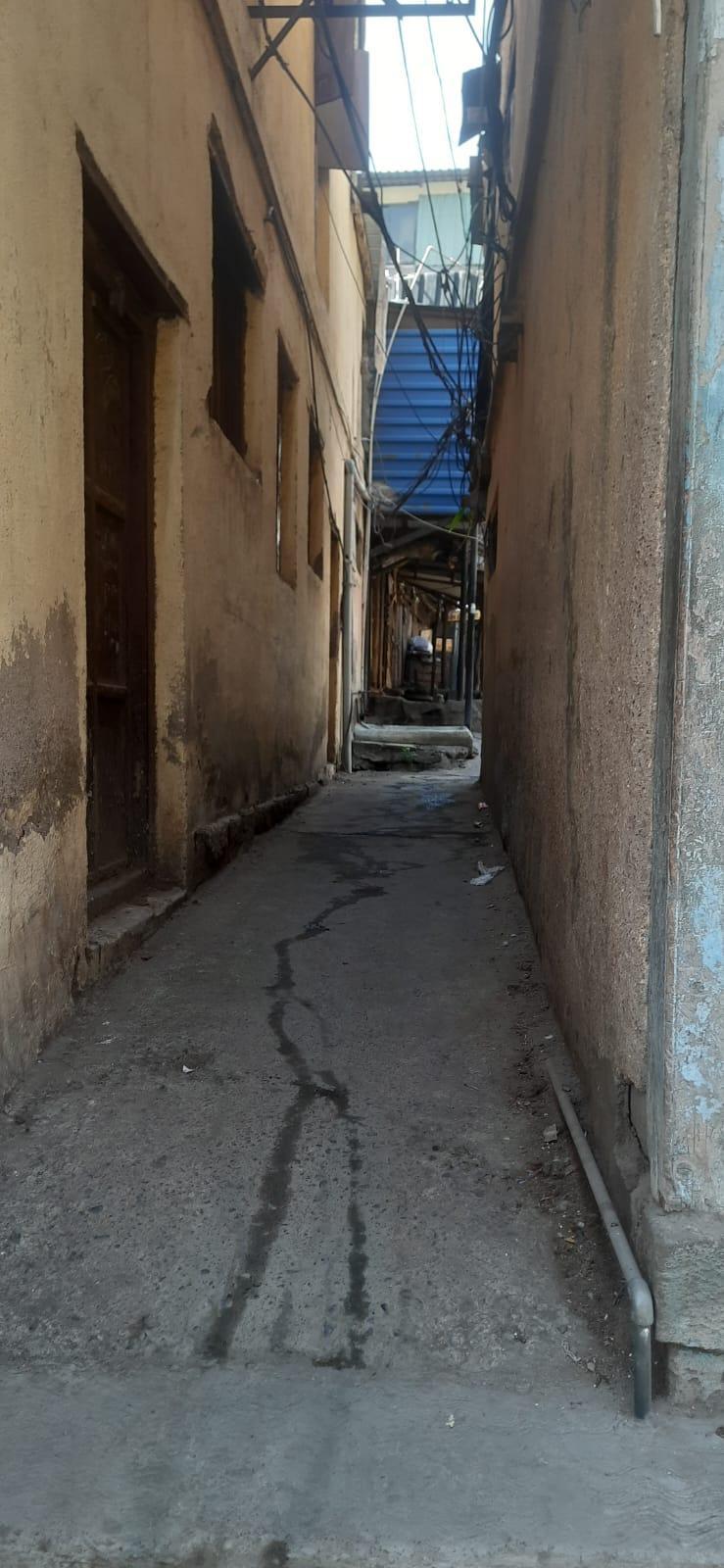

The layout of the alley reflects the occupational zoning common to old Pune, where specific trades were historically assigned to specific streets. This system, rooted in the Bara Balutedar model, organized hereditary professions spatially. Tambat Ali continues to reflect that structure, both in its physical arrangement and in the sounds and activity that define it.
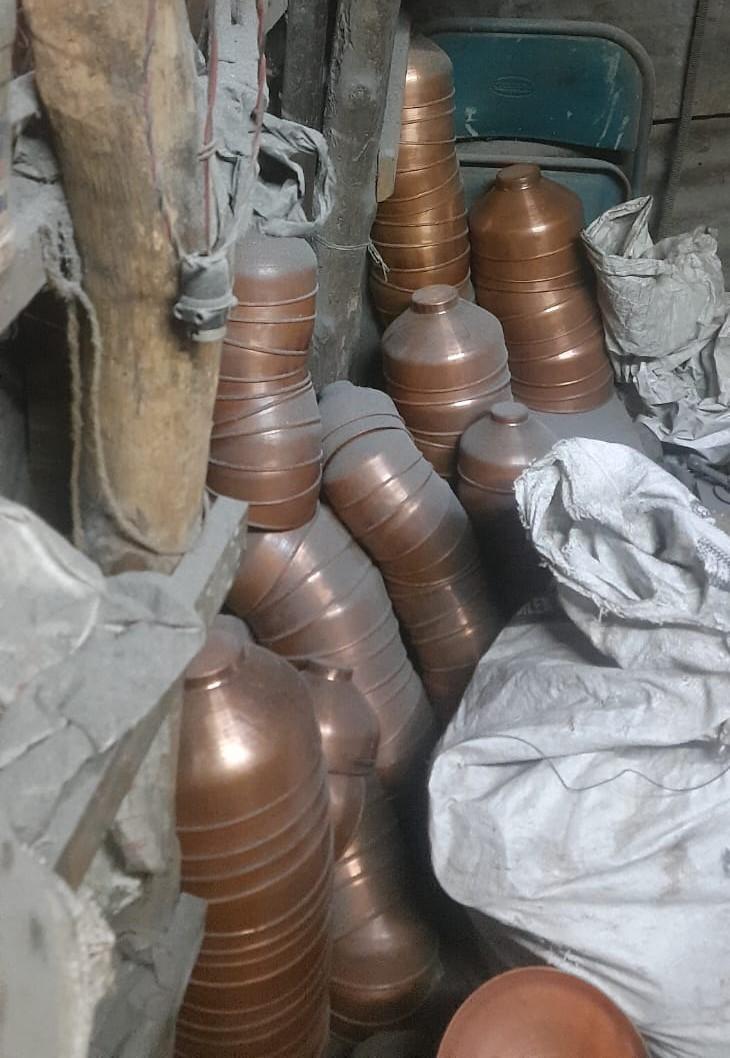
It is said that the Twashta Kasars migrated from the Konkan region during the reign of Shivaji Maharaj, drawn to Pune as it grew in military and administrative importance. Their skills were employed in the production of weapons, mandir utensils, currency, and large vessels required in forts. Later, under the Peshwas, they contributed to the establishment of Pune as the administrative capital. To support the functioning of this potential capital, traders and craftsmen from various regions were invited to settle in Kasba Peth. The coppersmiths of Tambat Ali set up small, functional workspaces within their homes; they were committed to their work in support of the empire and became part of the growing settlement in Kasba Peth.
Over time, however, this once-thriving centre of metalwork has seen a steady decline. Today, only a handful of families in Tambat Ali continue to practise the craft. Those who remain work with quiet persistence, aware that both the tradition and its lineage are steadily fading. There are many factors behind this shift, but many trace its origins to the colonial period. During this time, policies were introduced that discouraged indigenous manufacturing, while the introduction of industrial materials like aluminium, stainless steel, and plastic further disrupted local demand. With new consumer preferences and restrictive regulations on metal production, many karkhanas (workshops) were forced to close. From what was once a network of over 300 units in and around the alley, only a few dozen remain active today.
In response to this changing landscape, artisans from the community have gradually adapted their work. Some now offer repair services and restoration of older utensils. A key part of this work is kalai, a tin-coating process used to line the inside of brass and copper vessels and prevent them from reacting with food.
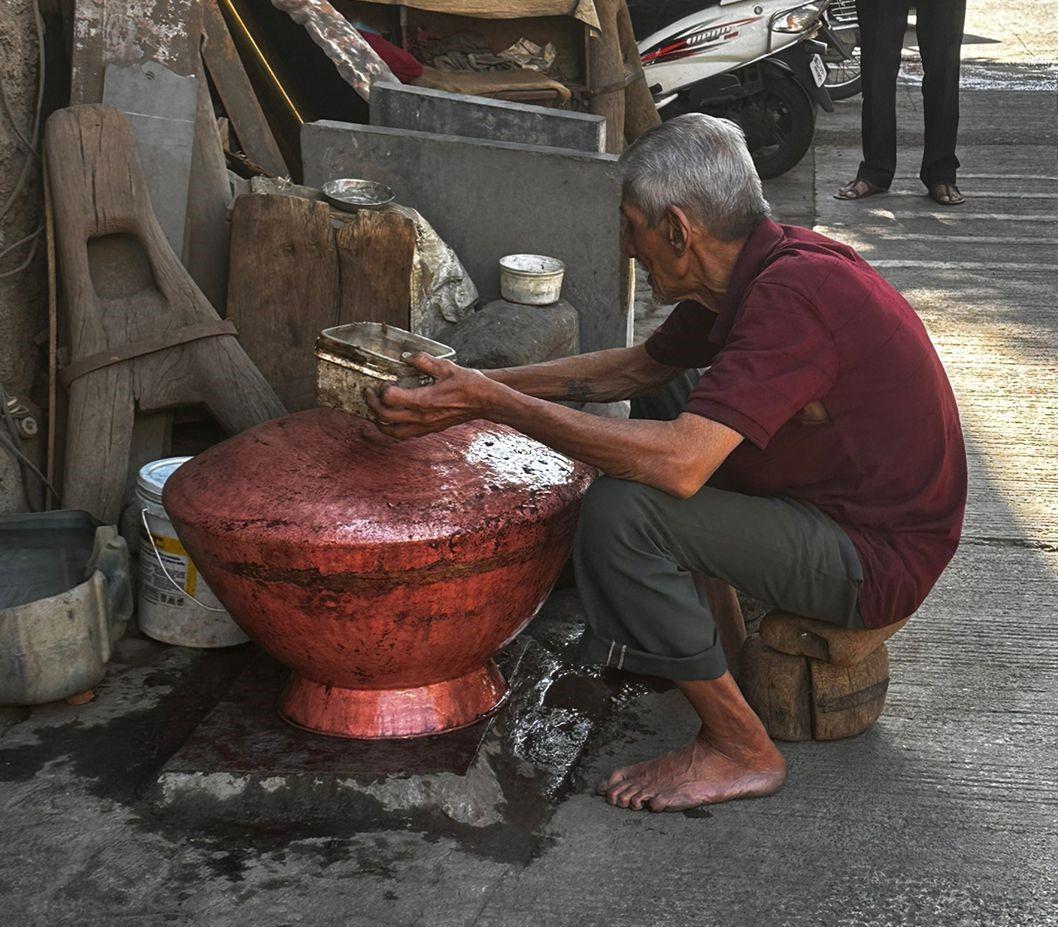
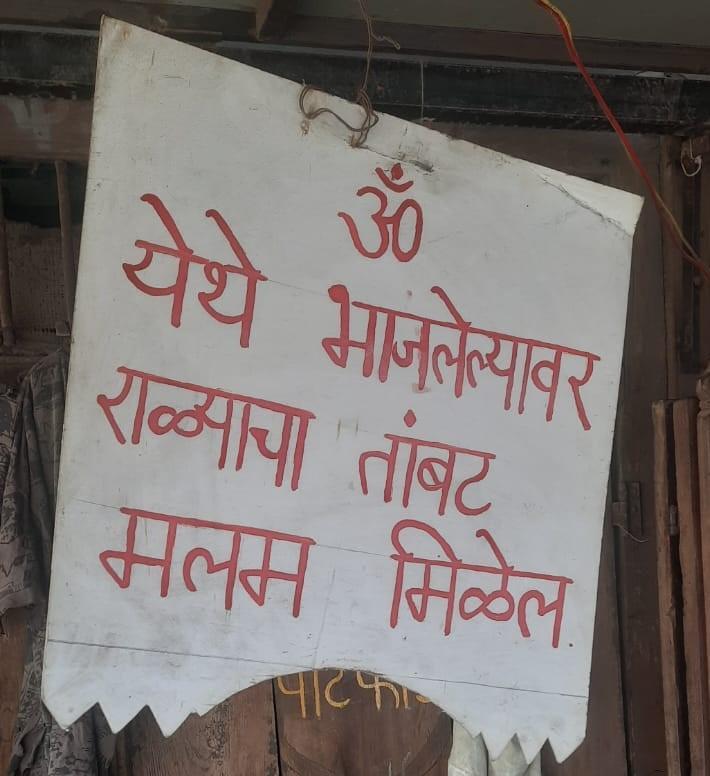
Others focus on decorative pieces, using imported lacquer to create shiny finishes that last several years. However, lacquered items are for display only and cannot be used for cooking or serving food.

Yet, the community's efforts to hold on to their heritage go beyond the act of making. Even as the tools and outputs adapt, the spaces, rituals, and relationships that shape this craft continue to be sustained in other ways.
The Twashta Kasar community has a specific Devi that they worship. They pray to Kalika Devi/Mata whose Mandir was established at the centre of this ali around 250 years ago. The Mandir is a community meeting place where everyone can sit, discuss, debate, and more and is independently run by a board of members of the community that are decided by elections periodically.
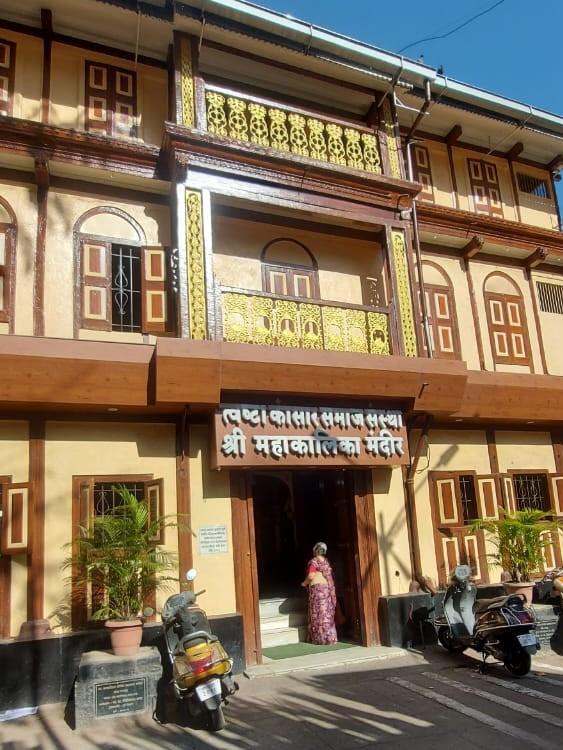
The board members are not paid and perform duties out of love and zeal for their community and crafts. Events like ‘barsa’ (baby naming ceremony), ‘munja’, weddings, festivals (Ganpati, Diwali, etc) are all celebrated together by the community in the Mandir itself and locals say that long ago a school existed within its premises as well.
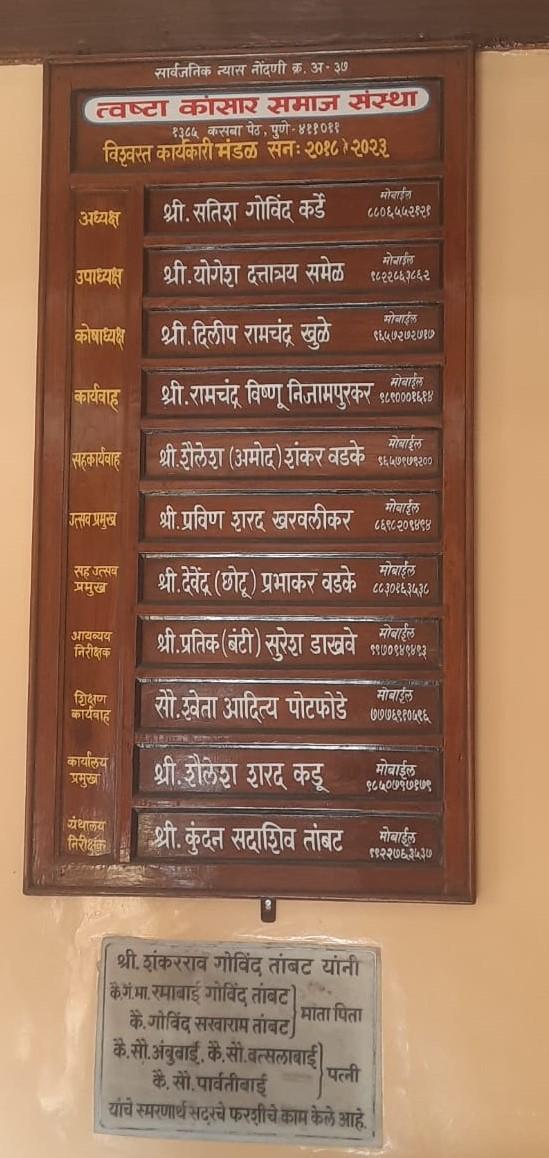
The Mandir’s design is closely tied to the community’s craft. The silverwork seen throughout, on the palkhi, the walls, and the ornaments of the Devi is made by local artisans trained in nakshikam, a traditional metal-engraving technique that involves precise handwork and delicate tools. This skill is passed down informally through generations and remains central to the community’s identity. Young artisans are still trained in this method today, and many of them take on silver work for local jewellers, including commissions for major firms like Poona Gadgil Jewellers.


Ganesh Chaturthi is celebrated by the community on a large scale, with a special mandap set up behind the Kalika Devi Mandir each year. The Ganesh murti installed here is made from Shami wood, a rare material that is seldom used today. The mandap is decorated with handcrafted silver and metalwork produced by the community in preparation for the occasion.
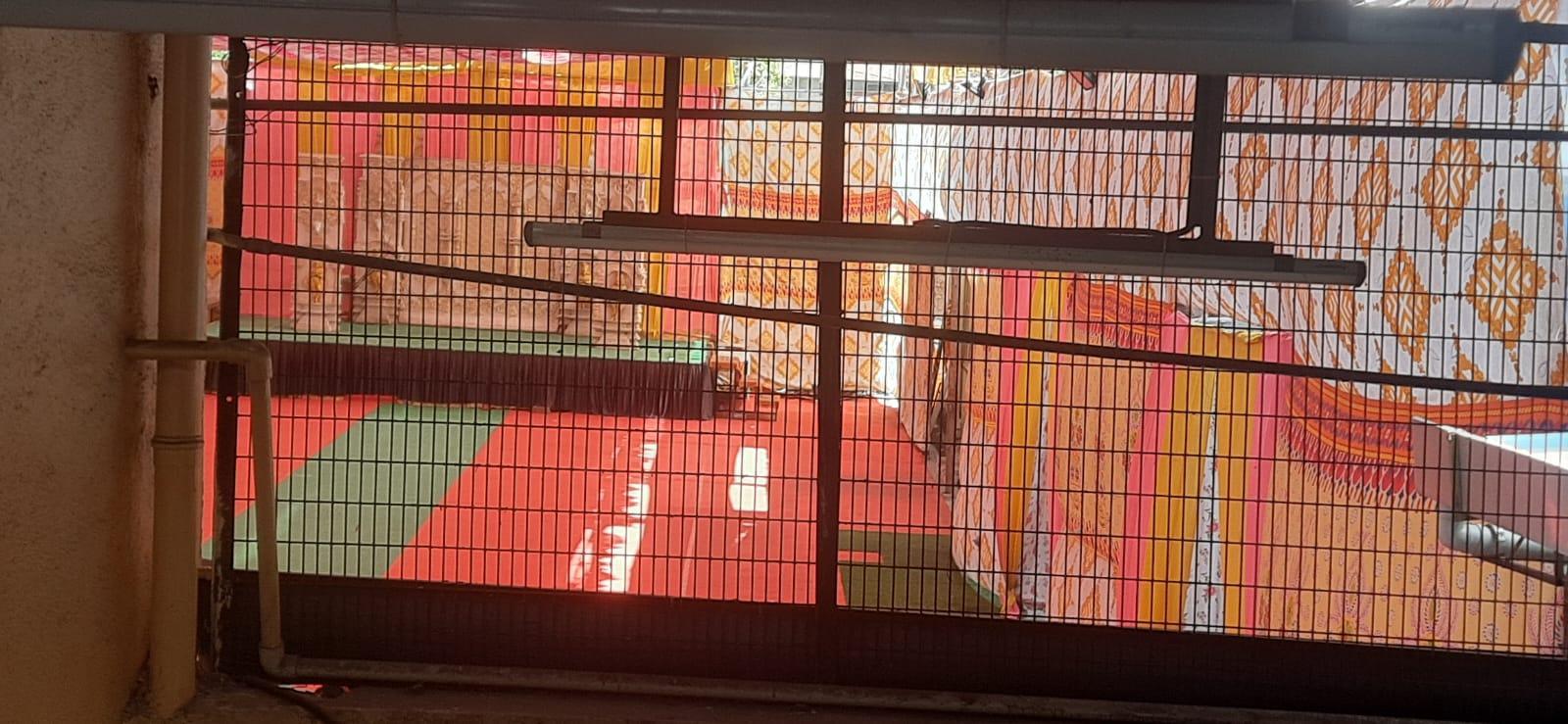
Notably, there is a small story behind why this annual festival is celebrated so fervently by this community. Decades ago, locals say that a fire broke out in the mandap, destroying its ornaments and decorations. In a widely recalled act of bravery, a Muslim resident entered the burning structure to rescue the Shami murti. Though the community lost much of their craftwork, the murti’s survival inspired them to rebuild. Since then, Ganesh Chaturthi has served not only as a religious event but also as a showcase of the community’s craftsmanship. Plans are now in place to establish a small craft sales counter in the mandap during the festival, allowing visitors to view and purchase locally made items after darshan.
The community also maintains a library, or vachanalaya, which has been operational for about 50 years. Open to the public for a modest monthly fee, the library contains books on history, freedom fighters, literature, and social reform. It continues to be run by volunteers from within the community.
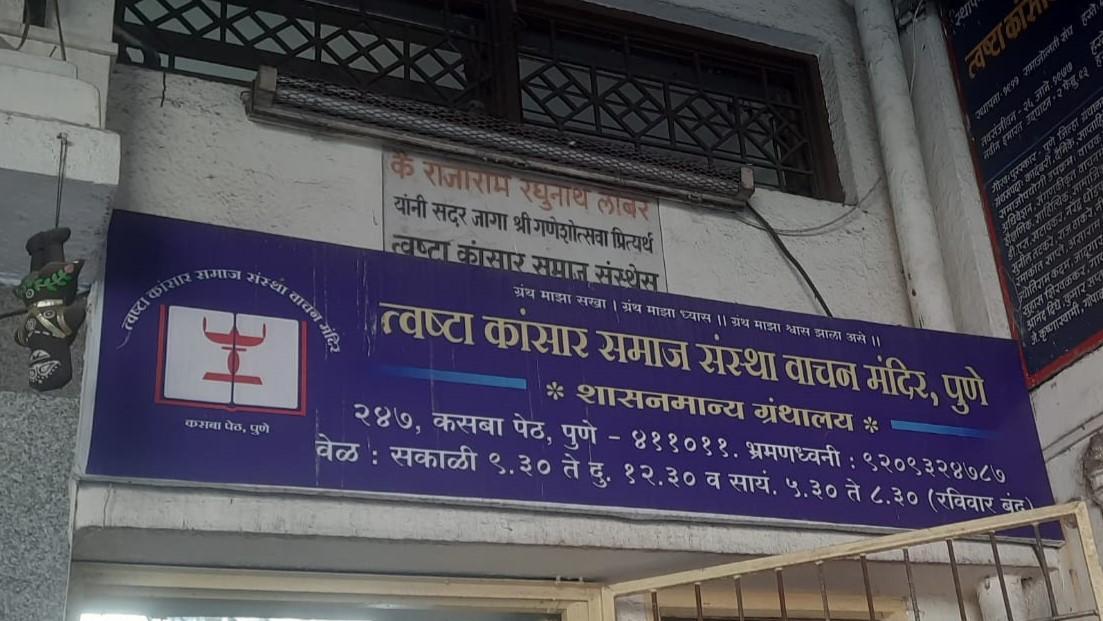
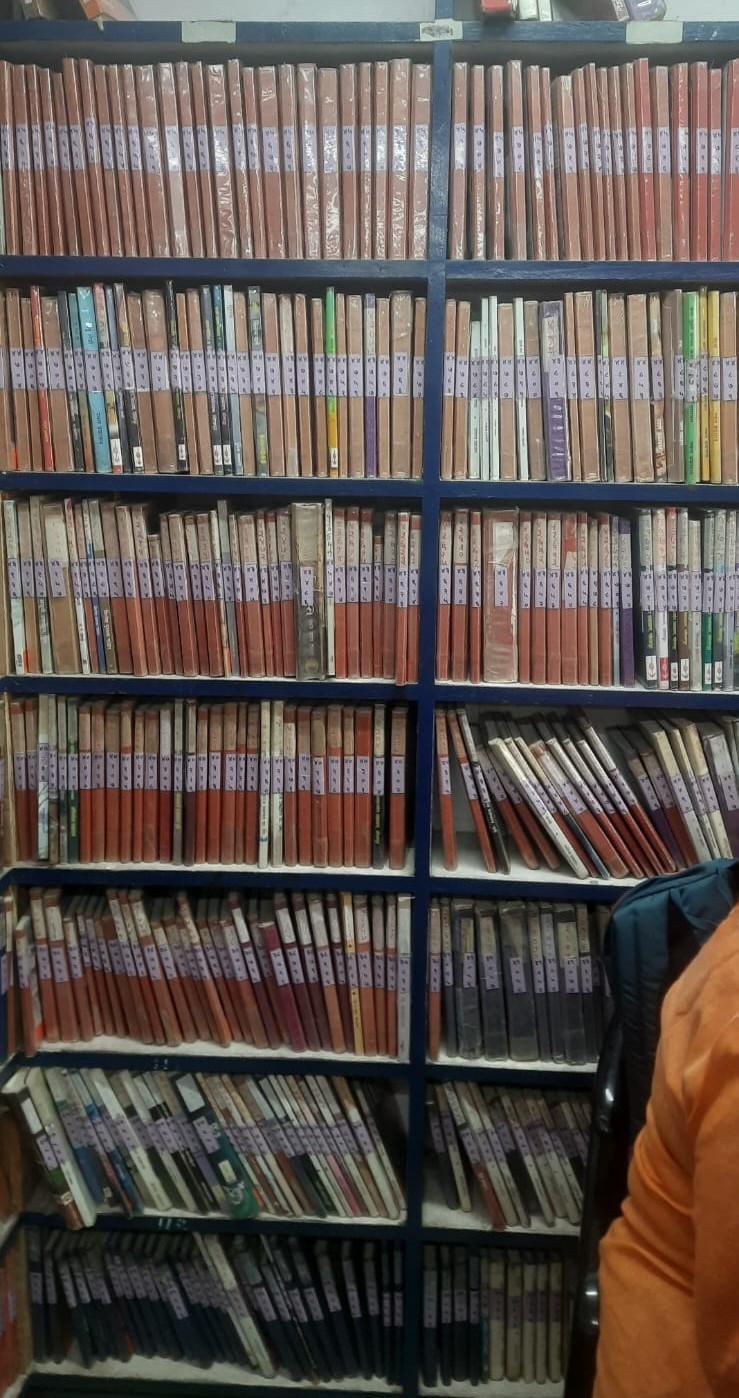
To raise awareness and document the nuances of their tradition, community member Girish Potphode created an exhibition titled Anandi Sansar, named after his grandmother. The exhibition features daily-use items, miniature figurines, tools, and visual guides to the production process, offering an intimate look at both the personal and technical dimensions of the craft.
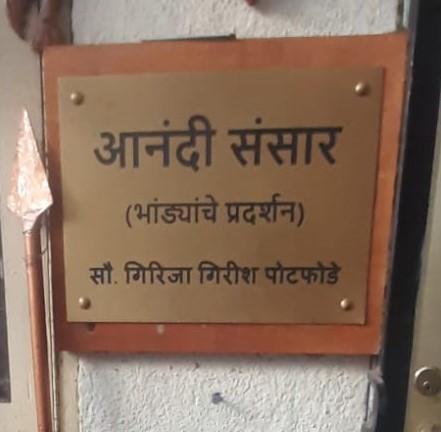


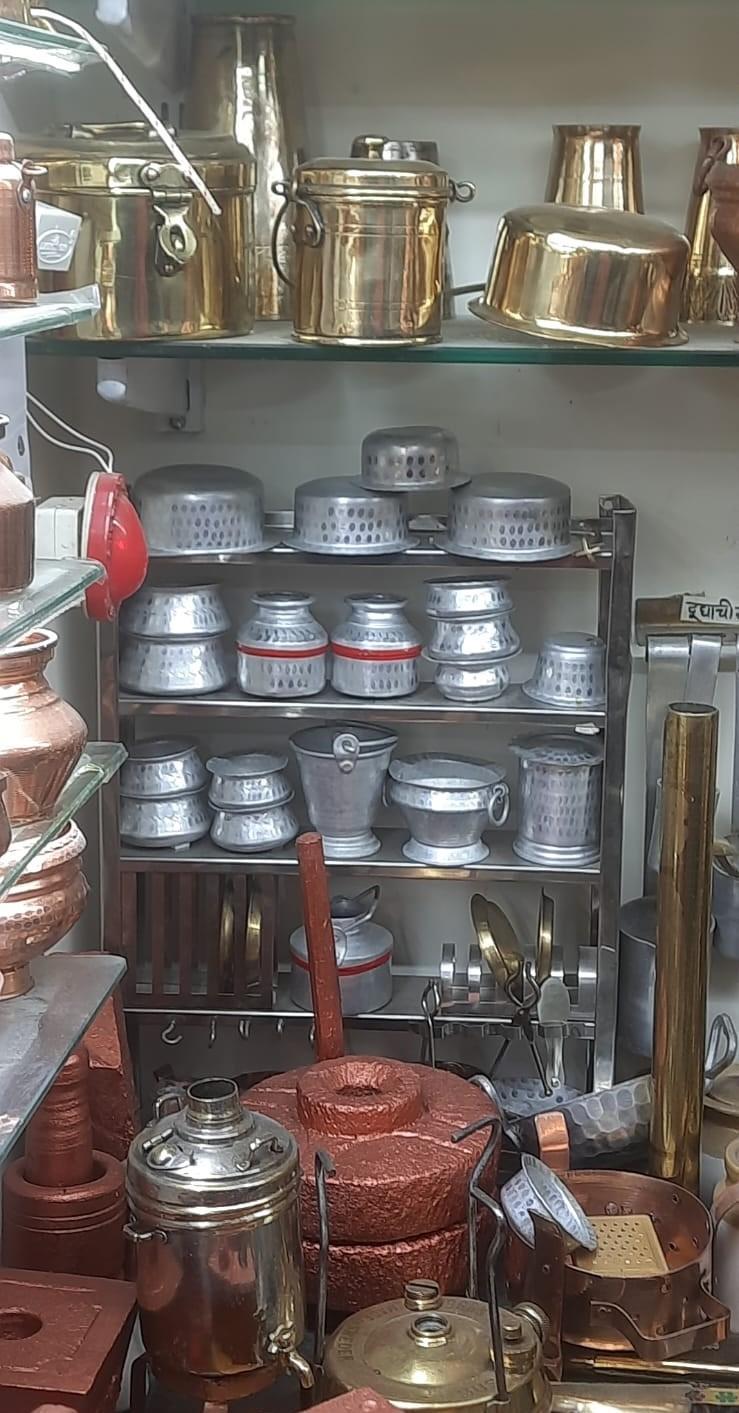
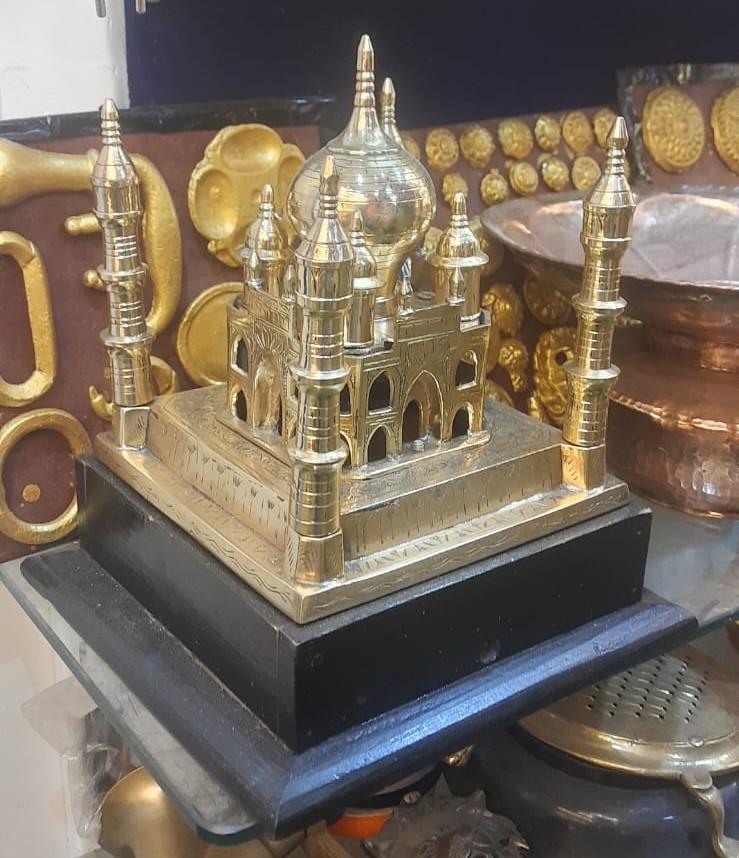

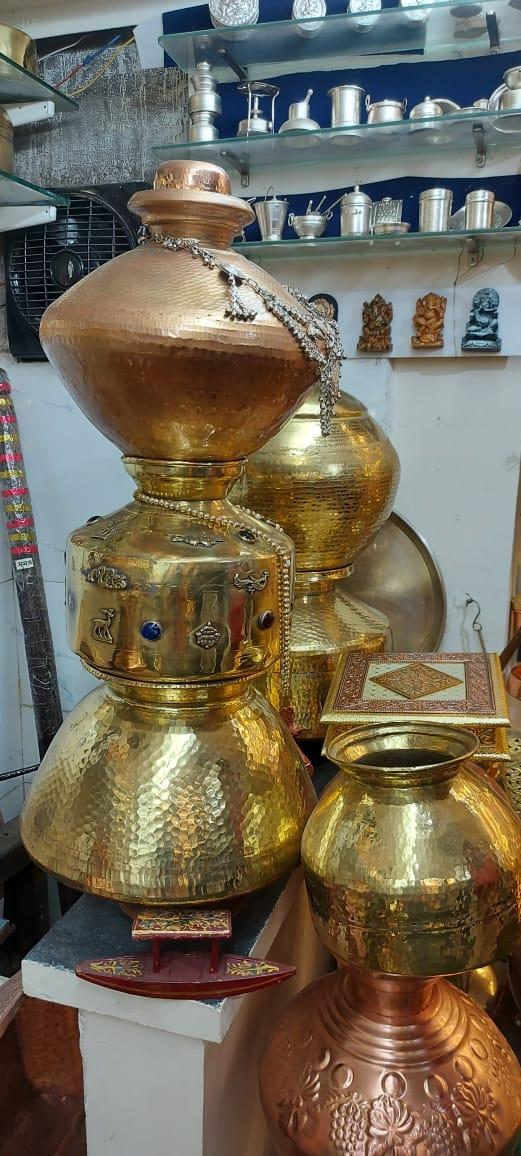

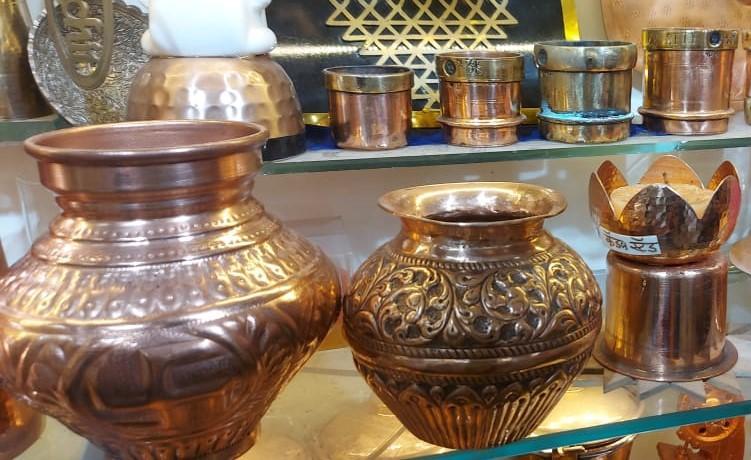

Creative Spaces of the District
Bal Gandharva Ranga Mandir
Bal Gandharva Ranga Mandir is a municipal theatre and exhibition venue located in Shivajinagar, Pune. It is one of the most well-known theaters in the district, owned and operated by the Pune Municipal Corporation (PMC). The foundation stone was laid in 1962, and the theatre was inaugurated in 1968 by Yashwantrao Chavan, who was the first Chief Minister of Maharashtra.
![Bal Gandharva Ranga Mandir in Shivaji Nagar, Pune.[5]](/media/culture/images/maharashtra/pune/artforms/bal-gandharva-ranga-mandir-in-shivaji-nagar-pun_pG9LMLk.jpg)
The project received conceptual input from P. L. Deshpande, a prominent Marathi writer and humorist. Named after renowned theatre artist Bal Gandharva, the venue includes an auditorium and an exhibition hall. It has served as a major site for Marathi and Hindi theatre productions, as well as cultural, educational, and corporate events.
Yashwantrao Chavan Natyagruha
Yashwantrao Chavan Natyagruha is a theatre and multipurpose hall located in the Kothrud area of Pune. Established by the PMC in 2000, it is named after Yashwantrao Chavan, the first Chief Minister of Maharashtra.
![Yashwantrao Chavan Natyagruha, Kothrud, Pune[6]](/media/culture/images/maharashtra/pune/artforms/yashwantrao-chavan-natyagruha-kothrud-pune6-317128d2.jpg)
The facility hosts a variety of activities including theatre performances, seminars, discussions, workshops, and cultural and religious programs. It serves as a key cultural venue in Pune’s western suburbs.
Bharat Ratna Pandit Bhimsen Joshi Kaladalan
Bharat Ratna Pandit Bhimsen Joshi Kaladalan is a cultural and arts complex located in the Sahakarnagar area of Pune. Managed by the Pune Municipal Corporation (PMC), the facility is named in honor of Pandit Bhimsen Joshi (1922–2011), an acclaimed Hindustani classical vocalist and recipient of India’s highest civilian award, the Bharat Ratna.
![The exterior of Bharat Ratna Pandit Bhimsen Joshi Kaladalan, Sahakarnagar area, Pune City.[7]](/media/culture/images/maharashtra/pune/artforms/the-exterior-of-bharat-ratna-pandit-bhimsen-jos_5OS8IGO.png)
The Kaladalan comprises a multi-purpose auditorium, an art gallery, a music library, and the Mandhre Gallery, named after Marathi actor Chandrakant Mandhre. The first floor houses rotating art exhibitions, while the second floor includes a curated collection of historical gramophone records, vintage audio equipment, and archival recordings of notable speeches by figures such as Mahatma Gandhi, Jawaharlal Nehru, Subhas Chandra Bose, Franklin D. Roosevelt, John F. Kennedy, and Rabindranath Tagore.
The venue is used for a variety of public programs, including cultural performances, lectures, seminars, and educational workshops. It serves as a regional center for the preservation and promotion of music, performing arts, and historical archives in Pune.
Pune Bharat Gayan Samaj
Pune Bharat Gayan Samaj (PBGS) is a cultural and educational institution in Pune, focused on the promotion of Indian classical music. It was established on 1 September 1911 with support from the Kirloskar Natak Mandali and was founded by musician and composer Bhaskarbuwa Bakhale. The institution offers training and programs to promote the study and appreciation of Indian classical music.
PBGS initiated the Bhaskar Sangeet Vidyalaya in 1949, offering instruction in vocal music and instruments such as harmonium, tabla, sitar, and violin, as well as classical dance forms like Bharatanatyam and Kathak. The institution also maintains a reference library containing books, gramophone records, and archival recordings of prominent musicians. PBGS plans to offer government-recognized certifications equivalent to Visharad and Parangat in music.
Lokshahir Annabhau Sathe Smarak
Lokshahir Annabhau Sathe Smarak is a public auditorium and cultural venue located in Bibwewadi, Pune. It was constructed under the supervision of the Pune Municipal Corporation (PMC) and is named after Annabhau Sathe, a noted social reformer, folk poet, and writer. The venue is used for a range of activities, including cultural performances, educational programs, religious events, and corporate seminars.
![Exterior view of Lokshahir Annabhau Sathe Smarak in Bibwewadi, Pune.[8]](/media/culture/images/maharashtra/pune/artforms/exterior-view-of-lokshahir-annabhau-sathe-smara_b4KQlYu.jpg)
Gyaan Adab
Gyaan Adab is a literary and cultural centre based in Pune, established around 2013–2014 as a non-profit initiative. It offers a small, community-oriented space for literature, visual art, and performance, often hosting readings, exhibitions, talks, and workshops. Events are held in English, Marathi, Hindi, and Urdu, reflecting the city’s multilingual culture.
![Exterior view of Gyaan Adab, a cultural centre in Kalyani Nagar, Pune.[9]](/media/culture/images/maharashtra/pune/artforms/exterior-view-of-gyaan-adab-a-cultural-centre-i_wrofYaF.jpg)
![A visual exhibition inside Gyaan Adab.[10]](/media/culture/images/maharashtra/pune/artforms/a-visual-exhibition-inside-gyaan-adab10-1a36f276.jpg)
Gyaan Adab is known for its focus on accessibility and dialogue, and regularly features both emerging voices and established artists. It also houses a modest library and functions as a venue for educational programs and discussion-based events.
Monalisa Kalagram
Monalisa Kalagram is a contemporary art gallery and cultural venue located in Koregaon Park, Pune. Founded in 2016 by Mona and Lisa Pingale, it functions as a multidisciplinary space for visual art, performance, and public programming. The gallery features rotating exhibitions by contemporary artists alongside music performances, film screenings, theatre, and literary events.
![Exhibition space inside Monalisa Kalagram, Koregaon Park, Pune City.[11]](/media/culture/images/maharashtra/pune/artforms/exhibition-space-inside-monalisa-kalagram-koreg_ebhuvr5.jpg)
Known for its informal, artist-driven approach, Monalisa Kalagram supports a mix of established and independent practitioners. In many ways, it plays an active role in Pune’s contemporary art scene, bridging traditional forms with newer, experimental work.
Cultural Programs
Pune International Literary Festival (PILF)
The Pune International Literary Festival (PILF) is an annual literary event held in Pune, launched in 2013 by author Manjiri Prabhu. It is a three-day festival open to the public, featuring panel discussions, author talks, book launches, and performances. The festival brings together writers, publishers, academics, and readers from India and abroad, and has included guests such as Sudha Murthy, Shashi Tharoor, Jerry Pinto, and Amish Tripathi.
![Actor Anupam Kher with PILF founder Dr. Manjiri Prabhu.[12]](/media/culture/images/maharashtra/pune/artforms/actor-anupam-kher-with-pilf-founder-dr-manjiri-_f6UPF68.png)
PILF focuses on literature across languages and genres, while also exploring intersections with cinema, history, and current affairs. The festival partners with institutions like Salzburg Global and sessions here are held in English, Marathi, and Hindi.
Sawai Gandharva Bhimsen Mahotsav
The Sawai Gandharva Bhimsen Mahotsav is an annual Indian classical music festival held in Pune since 1953. It was founded by vocalist Pandit Bhimsen Joshi as a tribute to his teacher, Sawai Gandharva. Organized by the Arya Sangeet Prasarak Mandal, the festival presents performances by established and emerging artists in Hindustani classical music.
![An aged Sawai Gandharva (center) with a young Bhimsen Joshi standing behind him.[13]](/media/culture/images/maharashtra/pune/artforms/an-aged-sawai-gandharva-center-with-a-young-bhi_ZUhtgvL.png)
The festival traditionally spans four nights and includes vocal and instrumental concerts, with a focus on the khayal genre. The event concludes with a recording of Sawai Gandharva’s thumri “Jamuna ke Teer” in Raga Bhairavi, a tradition that has continued since Joshi’s time.
Pune Art Festival (PAF)
The Pune Art Festival (PAF) is a large-scale visual arts event that showcases work by established and emerging artists. Featuring over 200 galleries and independent exhibitors, the festival includes painting, sculpture, photography, and mixed media. It attracts a broad audience including collectors, designers, and art professionals.
Pune International Film Festival (PIFF)
The Pune International Film Festival (PIFF) is an annual film festival established in 2002 to promote global cinema and film culture in Pune. Organized with support from the Government of Maharashtra, PIFF includes screenings, panel discussions, and masterclasses with filmmakers. It is the only festival in India that offers international recognition to Marathi cinema.
The event features several sections, including World Competition, Marathi Competition, Country Focus, and Retrospective. Each edition is structured around a contemporary theme. PIFF is closely linked to Pune’s film heritage, with ties to the Film and Television Institute of India (FTII) and the National Film Archive of India (NFAI).
Lavani Mahotsav
Lavani Mahotsav is an annual cultural festival in Pune district that celebrates Maharashtra’s iconic folk performance form, Lavani. Organised by Sharad Krida va Sanskrutik Pratishthan (SKVSP), the festival shifts Lavani from its traditional tamasha setting to formal stages like Pune’s Bal Gandharva Rang Mandir. It features solo and group performances, competitions, and curated showcases that highlight the range and artistry of Lavani, especially by women from rural and semi-urban areas.
![A group Lavani performance at Pune’s Lavani Mahotsav, featuring dancers in traditional nauvari sarees and ghungroos.[14]](/media/culture/images/maharashtra/pune/artforms/a-group-lavani-performance-at-punes-lavani-maho_4KP1d8X.png)
Performers present various Lavani styles, from romantic Shrungarika and devotional Nirgun, to folk Fadachi and intimate Baithakichi. Dancers perform in nauvari sarees with traditional jewellery and ghungroos, combining strong footwork, dramatic expressions, and rhythmic storytelling. Artists from Chaufula, Purandar, Baramati, Akluj, and nearby regions are invited to perform before city audiences, many for the first time. Winners are awarded symbolic ghungroos, and performances are judged on rhythm, expression, crowd connection, and stage presence.
By placing Lavani in cultural venues like Bal Gandharva, the Mahotsav repositions it as a respected art form. Smaller Lavani events are also held in Kothrud, Pimpri-Chinchwad, and Hadapsar during festivals like Navratri and Sankranti. While early audiences were largely male, recent editions have seen increased participation from women, as both performers and spectators, making the festival an important platform for women’s empowerment.
Performers such as Gautami Patil, Mansi Mulsale, and Apsara Jalgaonkar have gained wider recognition through the Mahotsav. Some editions experiment with cross-genre collaborations, such as mixing Lavani with rap, jazz, or classical dance, to appeal to younger audiences. Yet, at its core, Lavani Mahotsav remains a celebration of tradition, talent, and cultural pride in Pune’s evolving folk arts scene.
Artists
Purushottam Laxman Deshpande
Purushottam Laxman Deshpande (1919–2000), commonly known as Pu. La. Deshpande, was a Marathi writer, playwright, musician, and humorist. Known for his wit and narrative style, he was a major literary figure in 20th-century Maharashtra. In addition to his work as an author, he was trained in classical music and performed as a harmonium accompanist with vocalists such as Bhimsen Joshi and Vasantrao Deshpande. His harmonium renditions, including Marathi Natya Sangeet, devotional songs like ‘Bai Ya Pausanam’ and ‘Indrayani Kathi,’ and children’s songs like ‘Nach Re Mora,’ remain popular.
![Pu. La. Deshpande[15]](/media/culture/images/maharashtra/pune/artforms/pu-la-deshpande15-bedf8e4c.png)
Deshpande also composed music for several films, including ‘Mothi Manase’, ‘Manache Paan’, ‘Pudhache Paul’, ‘Dev Pavla’, ‘Dudh Bhat’, and ‘Gulacha Ganapati’, for which he also directed, wrote the screenplay, and played the lead role. He was closely associated with All India Radio (AIR) and Doordarshan and was deputed for a year’s training at the British Broadcasting Corporation (BBC).
![‘Batatyachi Chawl’, one of Deshpande’s famous books.[16]](/media/culture/images/maharashtra/pune/artforms/batatyachi-chawl-one-of-deshpandes-famous-books_yvAWJwX.png)
Deshpande became a household name through his satire shows such as ‘Varyawarchi Varat’, ‘Batatyachi Chawl’, and ‘Asa Mi Asami’, earning the title of ‘Maharashtra’s beloved personality.’
His most famous play, ‘Tuzhe Ahe Tujpashi’, is widely regarded as a classic. Deshpande’s 1962 novel ‘Vyakti Ani Valli’, a collection of 19 sketches of typical Marathi middle-class individuals, won him the Sahitya Akademi Award in 1965. He was awarded the Padma Shri and Padma Bhushan, and is regarded as a cultural icon in Pune and across Maharashtra.
Pandit Bhimsen Joshi
Bhimsen Gururaj Joshi (1922–2011) was a leading Hindustani classical vocalist and exponent of the khayal style in the Kirana gharana. Born in Karnataka and based in Pune for much of his life, he began training under Sawai Gandharva in 1936. Known for his powerful voice and improvisational skill, he had a wide concert repertoire and also recorded devotional music.
![Pandit Bhimsen Joshi (1922-2011)[17]](/media/culture/images/maharashtra/pune/artforms/pandit-bhimsen-joshi-1922-201117-18925cca.png)
His public career began at the age of 19, with his debut album released in 1942. After moving to Mumbai in 1943, he gained recognition as a radio artist and khayal singer. He also contributed to film music, notably singing Ramya Hi Swargahun Lanka in the Kannada film Sandhya Raga (1966), and collaborated with vocalists such as Manna Dey and M. Balamuralikrishna.
Joshi featured in the national integration video Mile Sur Mera Tumhara (1988) and was awarded the National Film Award for Best Male Playback Singer for Ankahee (1985). He also appeared in Jana Gana Mana, a commemorative project produced by A.R. Rahman in 1997.
He was the founder of the Sawai Gandharva Music Festival in Pune, held annually in memory of his guru. Joshi received numerous awards, including the Padma Shri (1972), Padma Bhushan (1985), Padma Vibhushan (1999), and the Bharat Ratna (2008), India’s highest civilian honor.
Shanta Shelke
Shanta Janardan Shelke (1922–2002), born in Indapur, Pune, was a Marathi poet, lyricist, journalist, and writer known for her work across multiple genres, including poetry, fiction, children’s literature, and song lyrics. She was among the early women in Marathi literature to gain prominence for both her literary output and her contributions to music and media.
![Shanta Shelke[18]](/media/culture/images/maharashtra/pune/artforms/shanta-shelke18-2728ad01.png)
Shelke completed her M.A. in Sanskrit in 1944, becoming the first woman from the Devang Koshti community to do so, and received the Tatyasaheb Kelkar Gold Medal. She worked as a journalist with publications such as Samikshak, Navyug, and Dainik Maratha, while continuing to write poetry and prose.
She wrote lyrics for films and albums that were set to music by composers including Hridaynath Mangeshkar, Bhalaji Pendharkar, and Salil Chowdhury. Her popular songs include Punvecha Chandrama and Hi Chal Turu Turu, which remain widely known in Maharashtra. Shelke also published several poetry collections, including Varsha (1947) and Rupasi (1956), as well as novels such as Gulmohar and Premik.
In addition to original work, she translated Sanskrit texts, English novels, and Japanese haiku into Marathi. Her books for children, such as Chimanchara (1960) and Thui Thui Nach Mora (1961), remain in circulation. She also published an autobiography, Dhulpati (1982), and essays and character sketches reflecting her long engagement with literature and culture.
Namdeo Dhasal
Namdeo Laxman Dhasal (1949–2014), born in a village in Pune district, was a Marathi poet, writer, and activist, best known as the co-founder of the Dalit Panther movement in 1972. His work brought Dalit experiences and urban marginalization into Marathi literature with a direct and unflinching voice.
Dhasal’s debut collection, Golpitha (1972), drew from the realities of Mumbai’s underclass and marked a shift in modern Marathi poetry. His writing was known for its visceral language and politically charged themes, often portraying life in the city’s slums, brothels, and informal settlements.
![Namdeo Dhasal (1949-2014)[19]](/media/culture/images/maharashtra/pune/artforms/namdeo-dhasal-1949-201419-78708646.jpg)
His work depicted a gritty, unvarnished Mumbai - a world of pimps, smugglers, crooks, and struggling communities, set against the backdrop of opium dens, brothels, and rundown urban neighborhoods. Poet Arundhathi Subramaniam described his vision of the city as “Mumbai without her make-up, her Botox, her power yoga,” and as a place “that seethes unruly, menacing, yet vitally alive, beneath the glitzy mall and multiplex, the high-rise and flyover... of the non-gentrified, the untamable, the non-recyclable.”
As a political activist, Dhasal played a key role in shaping the Dalit Panther manifesto, which drew inspiration from the Black Panther Party and emphasized anti-caste struggle. He was awarded the Padma Shri in 1999 and the Sahitya Akademi Lifetime Achievement Award in 2004. His work remains foundational to Dalit literature and post-independence Marathi poetry.
Malati Bedekar
Malati Vishram Bedekar (1905–2001), born Balutai Khare, was a Marathi writer and social reformer regarded as one of the earliest feminist voices in modern Marathi literature. Writing under the pseudonym Vibhavari Shirurkar, she published Kalyanchi Nishwas (1933), a collection of short stories that addressed taboo subjects such as female desire, extramarital relationships, and the limitations placed on women in society.
![Malati Bedekar (1905-2001)[20]](/media/culture/images/maharashtra/pune/artforms/malati-bedekar-1905-200120-34dbc005.png)
Her early work sparked controversy for its open critique of social conventions, and she kept her identity anonymous until 1946. Bedekar later published Bali (1950), based on her observations of communities labeled “criminal tribes” under colonial law, as well as novels such as Shabari (1956) and Kharemaster, a fictionalized account of her father’s life.
She earned a doctorate in Sanskrit and worked as a teacher and administrator, balancing her academic career with literary activity. Bedekar was awarded the Maharashtra State Literary Award in 1964 and is widely recognized for her role in expanding the scope of women’s writing in Marathi.
Sources
‘Shanta Janardan Shelke’. 2022. Sahapedia.https://map.sahapedia.org/article/Shanta%20J…
Ajay Joshi & Zubin Khetani. 2021. ‘Theatre in Pune’.Sahapedia.https://map.sahapedia.org/search/timelineDet…
Ananya Pathak. 2022. ‘Malati Bedekar: Contemporary Marathi Literature’s First Feminist Writer’. Feminism in India.https://feminisminindia.com/2022/10/14/malat…
Arundhathi Subramaniam. ‘Namdeo Dhasal’.Poetry International.https://www.poetryinternational.com/en/poets…
Atikh Rashid. 2023. ‘The Forgotten Art of Poonah Painting That Kept Women Busy in Victorian England’.Indian Express, June 10.Pune Cultural Mapping Team. 2021. ‘Pune Bharat Gayan Samaj’.Sahapedia.https://indianexpress.com/article/cities/pun…
Chinmay Damle. 2024. ‘Taste of Life: Even a Greenhorn Can Do Poonah Painting for Home Decoration’.Hindustan Times.https://www.hindustantimes.com/cities/pune-n…
Citywoofer. ‘Pune Art Festival’.https://www.citywoofer.com/e/pune-art-festiv…
Filmitalia. ‘Pune International Film Festival’.https://filmitalia.org/en/festival/55754/
Marathi Vishwakosh. 2022. ‘Purushottam Laxman Deshpande’.Sahapedia.https://map.sahapedia.org/article/Purushotta…
Monalisa Kalagram. ‘About’.https://monalisakalagram.com/
Outlook India. 2008. ‘Bharat Ratna Bhimsen Joshi’.Vivek Publishers. https://www.outlookindia.com/art-entertainme…
Pune International Literary Festival. https://pilf.in/
Pune Municipal Corporation. ‘Lokshahir Annabhau Sathe Smarak’.Gyaan Adab. n.d. ‘About Us’. Accessed March 17, 2025.https://www.pmc.gov.in/en/lokshahir-annabhau…
Santosh Khedlekar. 2021. Lavani through the Ages in Pune. Sahapedia.https://map.sahapedia.org/article/Lavani-thr…
Streeshakti. ‘Malati Bedekar’.https://www.streeshakti.com/bookV.aspx?autho…
Utsav. ‘Gandharva Bhimsen Festival’.https://utsav.gov.in/view-event/gandharva-bh…
Last updated on 5 November 2025. Help us improve the information on this page by clicking on suggest edits or writing to us.